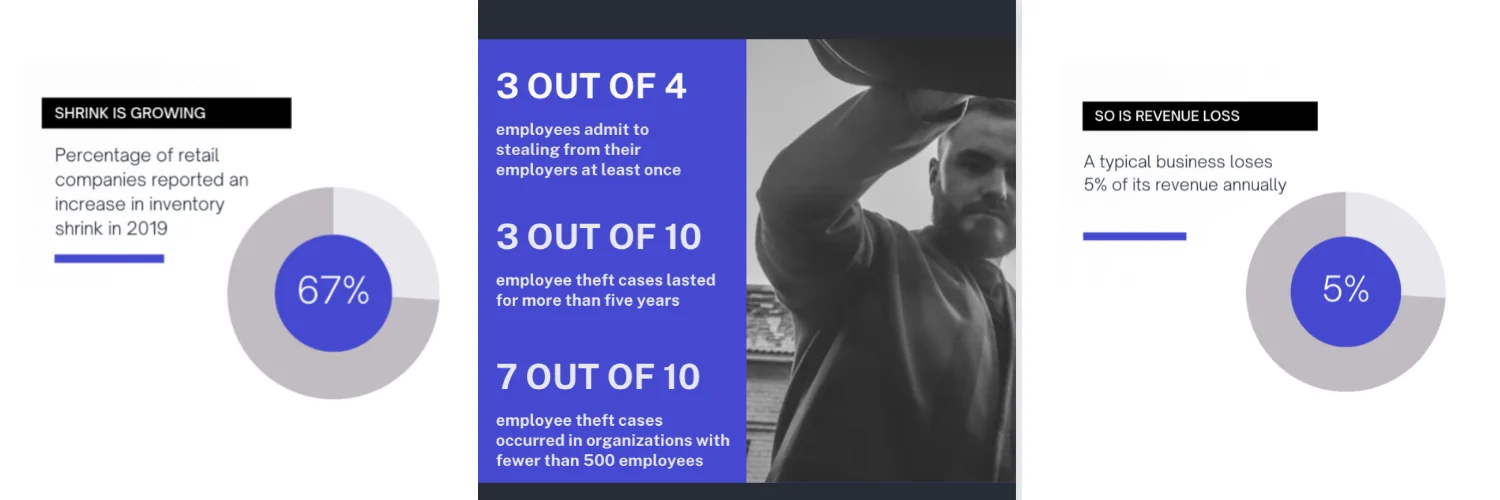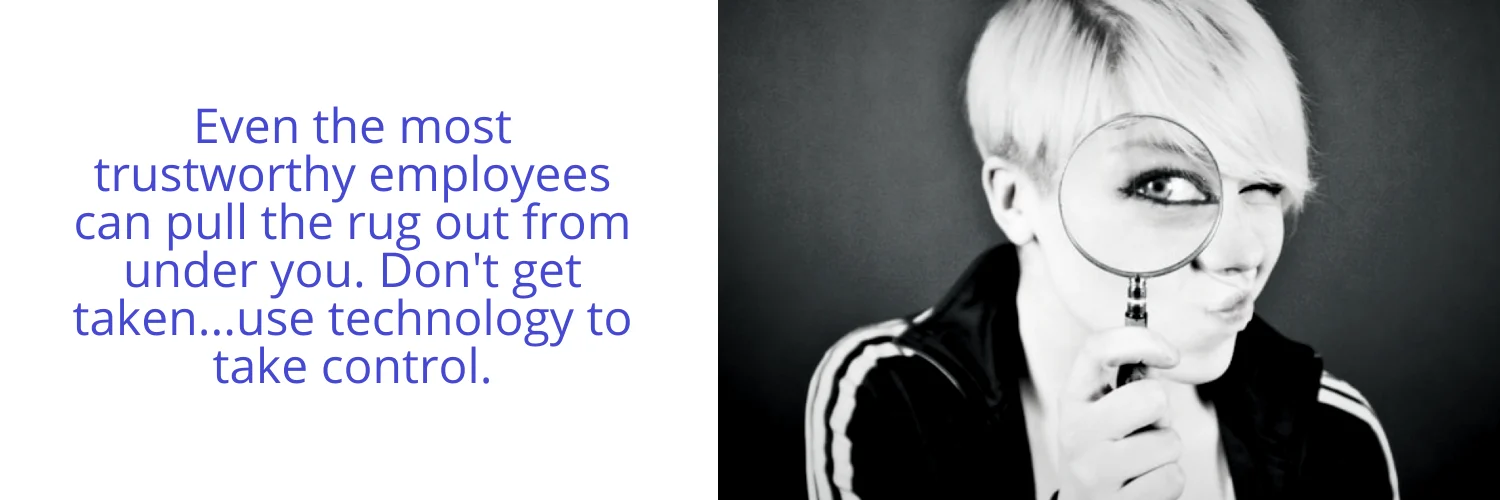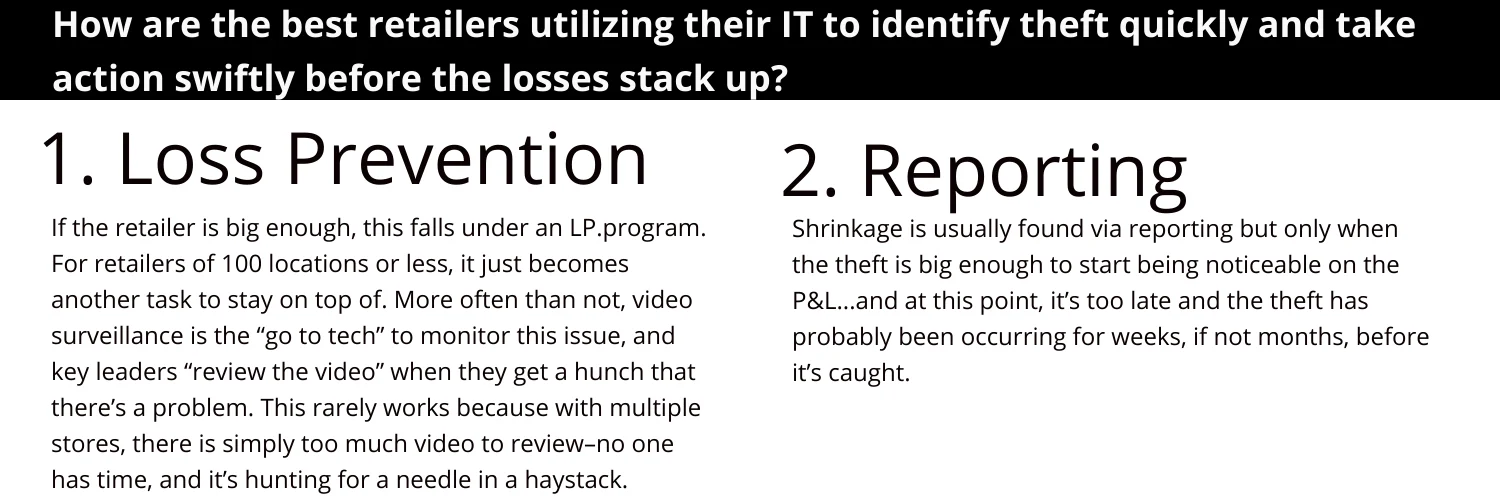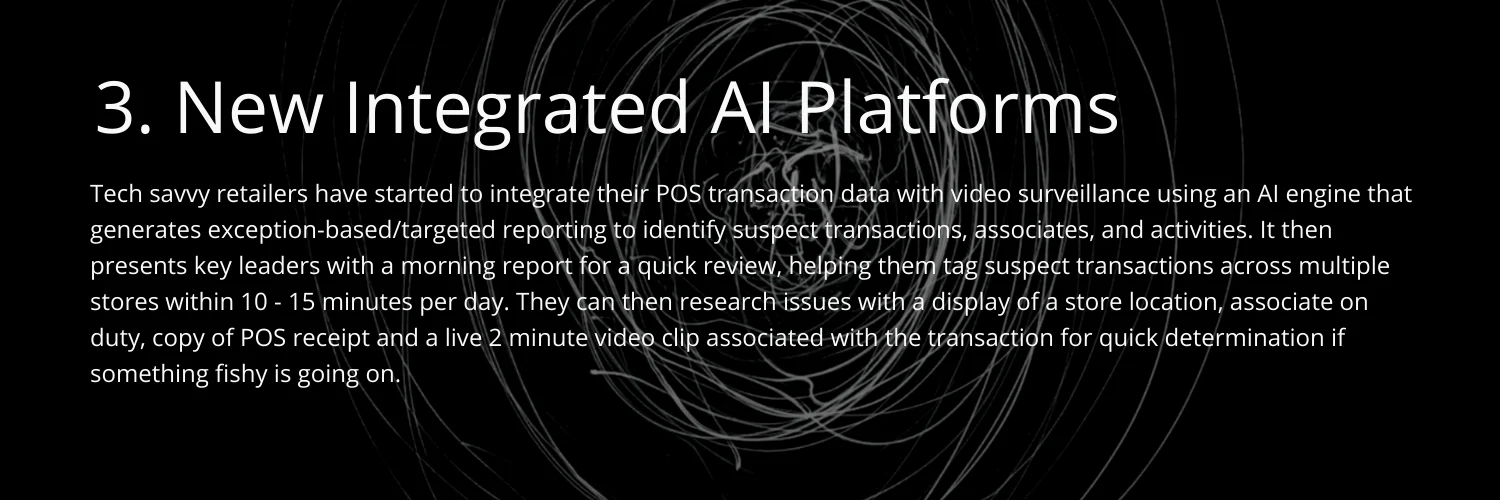The Issue
As a retail owner, you hate to think about your store staff turning on you…but it happens. You’re busy, so it’s all too easy to miss it. But if you start getting a bad gut twitch about an employee or if inventory or cash starts looking funky, it may be time to dig deeper–and for good reason. Theft and embezzlement are on the rise, affecting 95% of businesses in the U.S. Here’s some sobering facts on the most sobering facts on the matter.

The Insights
To catch an associate stealing from you, you first have to first understand their methods, and there are four of them that you most need to be aware of.
1. Discarding Transactions
There are a few ways to get away with this one:
- They ask the customer if they want the receipt up front & intend to pay with cash
- They ring up items, take the cash and hand over the product & change
- They discard the transaction before finalizing and put the “change” amount back in the drawer
2. Fake Returns to Cash
Here, the associate will go into your system, look for a transaction, return the item, and then take the cash. Even if your policy is to always do a store credit or gift card for returns, the associate can go into your system, print an old receipt, ‘return’ the item and then take the cash.
You must monitor this. If you see high return rates or numbers of cash transactions, look deeper. Typically, the associate is using a manager’s or another associate’s log in to get away with this.
3. Direct Theft
This is just flat out stealing, where they take things themselves or they get a friend to come in and assist them in bagging what they please for a share of the posse. Most clients do NOT keep good inventory control and they miss this altogether, which is a big mistake.
Cyclical inventory checks and stock counts, where you cycle departments versus the whole store, is the best practice to catch this.
4. Loyalty Fraud
You have a loyalty program where you give points/cash to customers when they buy things. The associate can ask customers if they are a loyalty member and, If they say “no”, the associate can direct ALL of those ‘no’s’ into a fake customer loyalty account and reap the aggregated benefits.
To figure it out, All Point has a custom report that can uncover anomalies.
The Actions
Shrinkage is a known issue within retail–it’s the nature of the beast. Tracking and preventing employee theft can happen in two ways: (1) by observing people and (2) technology.
If you’re leaning on people, you have to use common sense cues in sync with training for what to watch out for. You first have to understand that theft is usually driven by three things being present: (1) motive, (2) desire, and (3) opportunity. So, to get ahead of it, you have to monitor what’s happening on the floor with a clear idea of what you’re looking for–which is often risky behavior patterns–and keep the associates feeling valued and rewarded. If they don’t want to do wrong by you, they won’t steal, right?
Since there’s only so many hours in the day and so many warm bodies to go around, technology can be an ideal virtual watchdog.


Tips From the Trenches
√ Stock counts on a cyclical category basis.
Counting inventory at one specific time frame is a headache and disruptive to the store. It also lets employees get ahead of when it’s coming so they can be sneaky about when they choose to steal. Instead, do random, smaller cycle counts by category or high theft (or valuable) items. You can do it in a fraction of the time and set it up in minutes.
The platforms that All Point works with help you count in one of two ways: (1) expected quantity or (2) double blind. Regardless, know what the acceptable % margin of error of shrink is that you are aiming for and keep track of it so that you can quickly identify atypical variances.
√ Where there’s smoke there’s often fire
It may seem simple, but it’s really one of the best red flags out there…when the same names are attached to the anomalies, look deeper. You want to find problems BEFORE they are noticeable on your P&L. By then, you have a BIG problem. You also want to find the people that seem to circle around the anomalies, especially if they always seem to have a great story.
√ Run the reports and look for changing patterns and trends
Like we mentioned above, the right system can run the daily, weekly and monthly reports that make it infinitely easier to spot a situation. When something changes and there doesn’t seem to be a glaring reason, it’s time to put on your investigative hat.
√ Monitor non-transactional cash drawer popsUsing POS system reporting, make sure to monitor how often the cash drawer is opened and, if possible, check videos to make sure that transactions were truly taking place. You can’t monitor this when a key opens it up, so invest in the tech to make this turnkey.
√ Build a loss prevention plan
There’s an old saying of ‘plan the work and then work the plan’, and it really rings true when it comes to loss prevention. It doesn’t take that long to set up a system, and it will save you so much lost profit. Key is to know what you are monitoring, how often and via what methods. You want to be able to offset the cost of lost revenue and cost of lost profit and, with the right system, it’s easy to do it.
√ Ensure manager’s are changing their log in information once a month
Their log in information serves as the keys to kingdom for associates to get away with theft…make sure it’s very hard to get!

Why Is This Worth Your Time?
Our client results following these tips and tactics have been staggering! We had (2) separate retailers identify, and in one case recover, theft in excess of $25k within DAYS of implementing these systems. It would usually take weeks and months. They also had the transactional and video proof by both store and the associate responsible so that they could prosecute without risk.
Technology designed, integrated, used and monitored properly is the key to quick identification and faster action when theft occurs. There is an immediate capturing of ROI, not to mention creating a deterrent within your organization by being able to quickly identify and prosecute those responsible.

What you don't know can absolutely hurt you.
"*" indicates required fields
